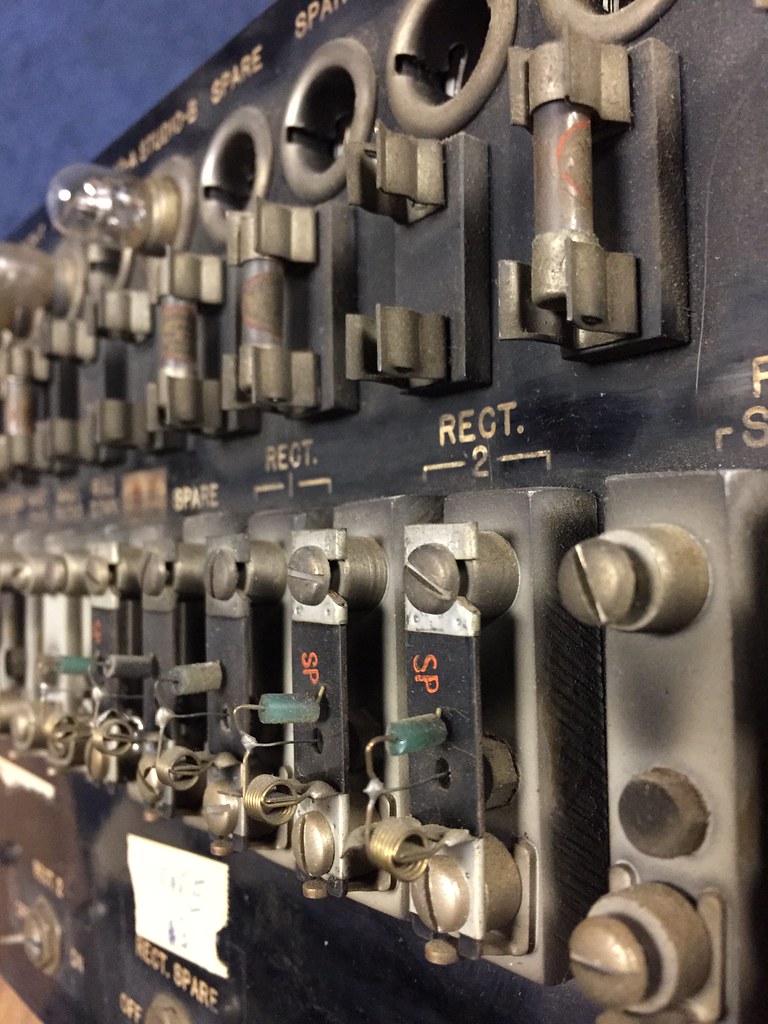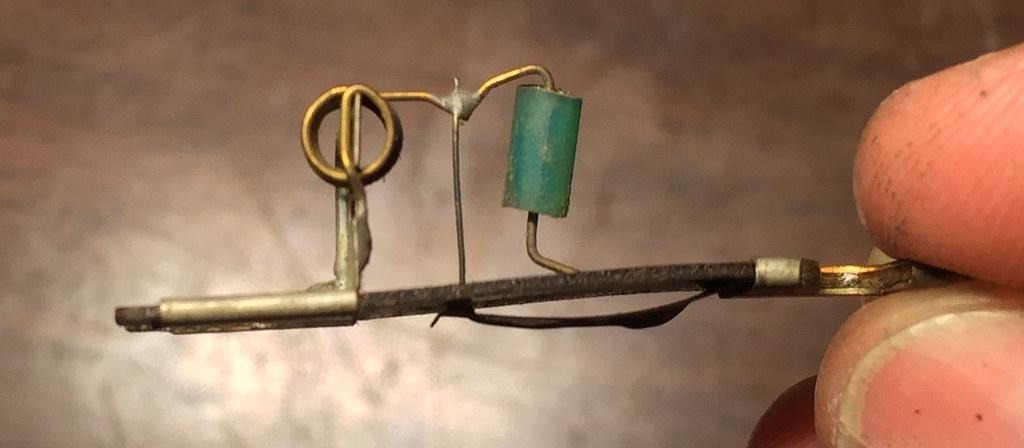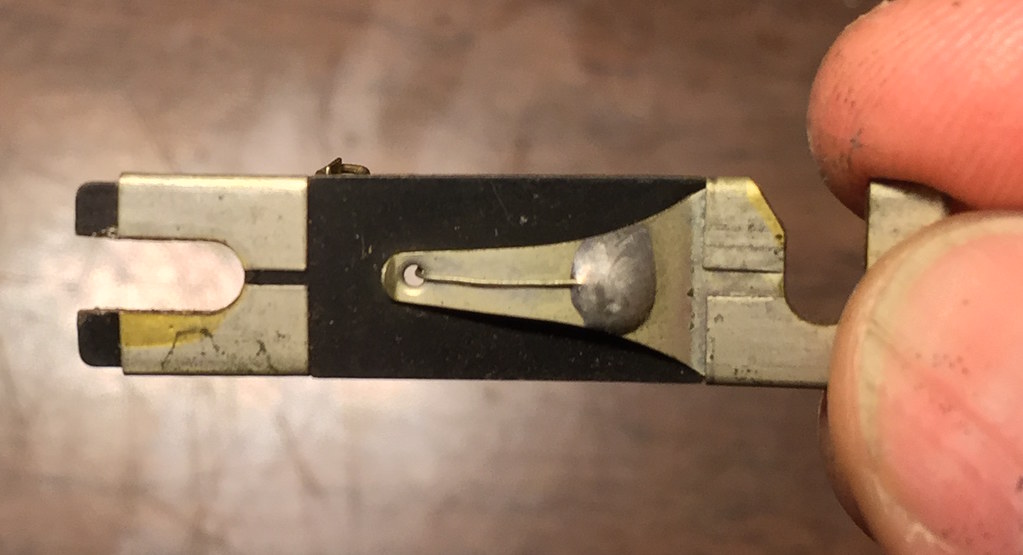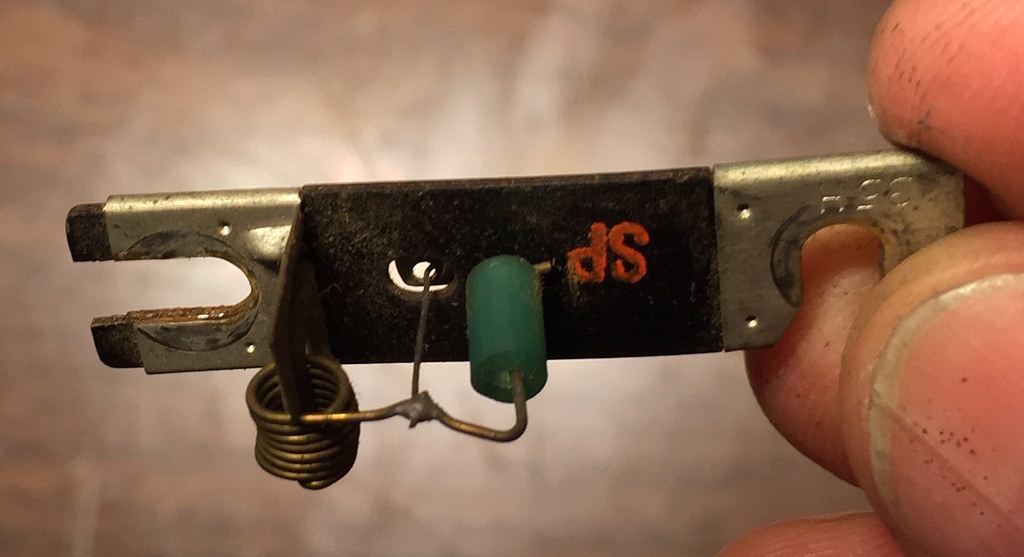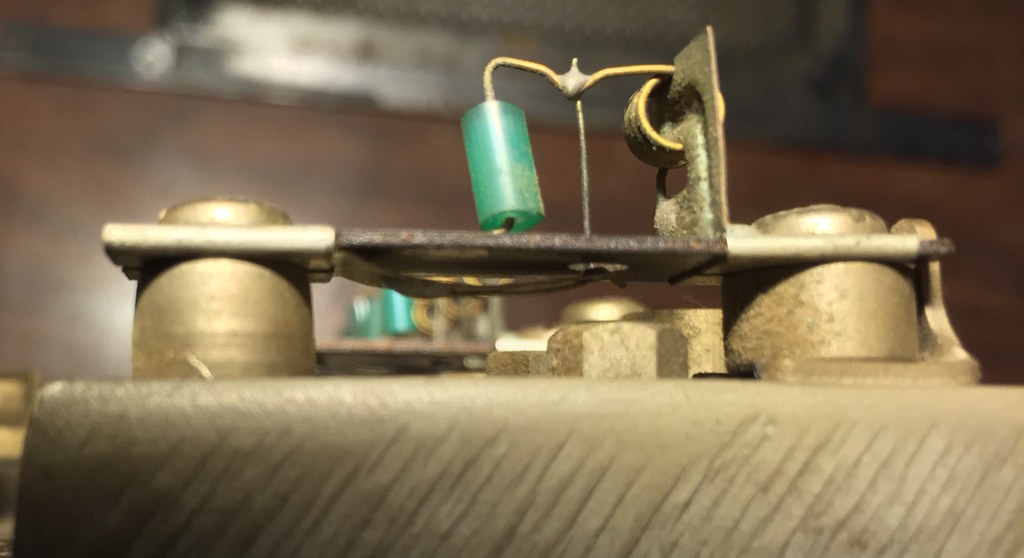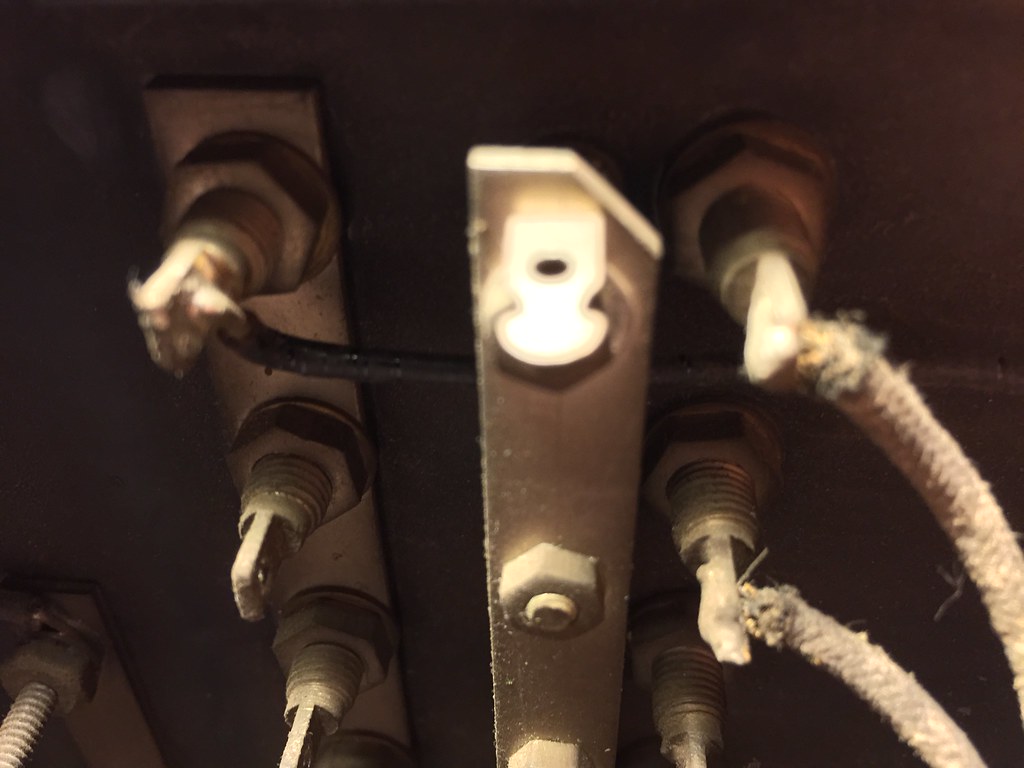Old-timer's test: This a close-up of a master power panel from a late 1930's radio station rack installation. The 3 terminal parts below the cartridge fuses, with the spring coil and green bead. They are not wired in series with the fuses above. I can't find any references as to what this part is, exactly. There was a relay activated blown fuse alarm, maybe they are part of that system?
